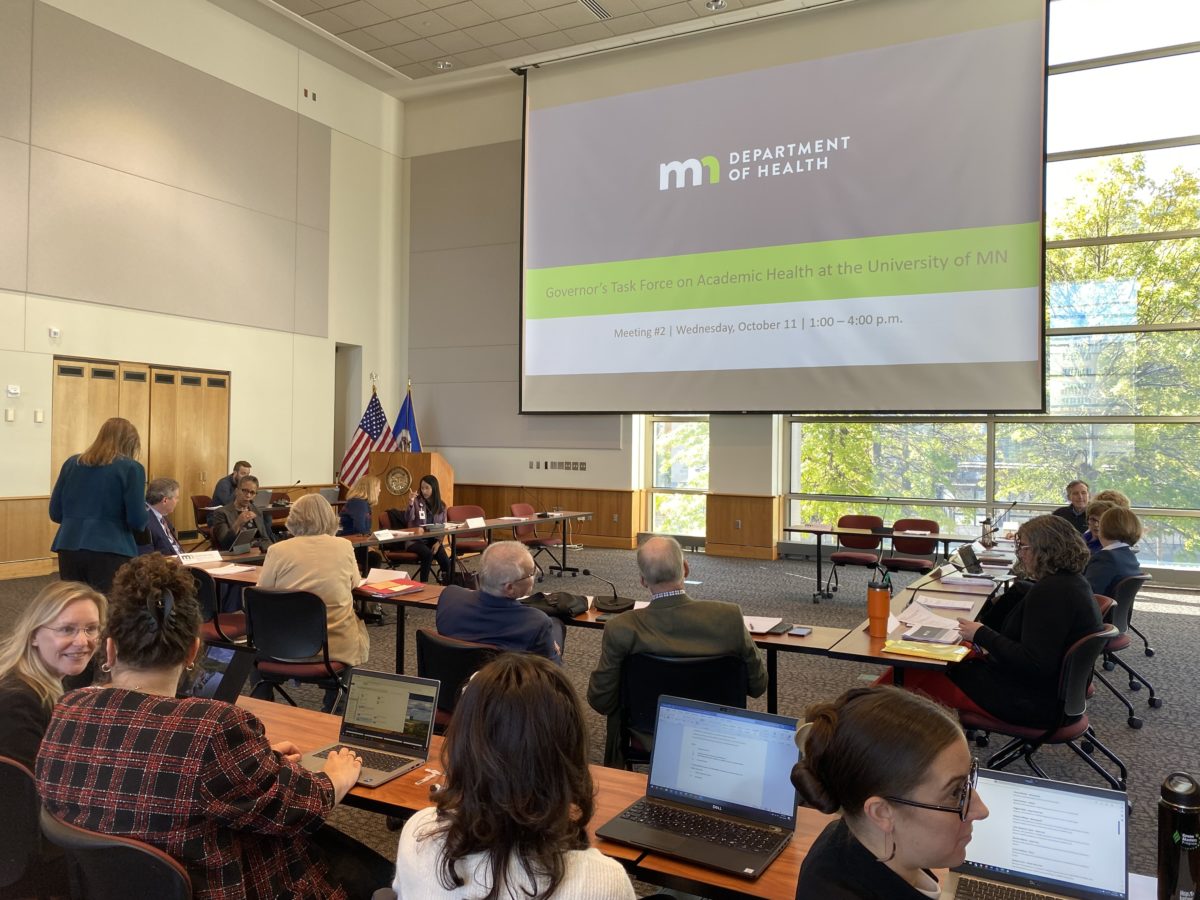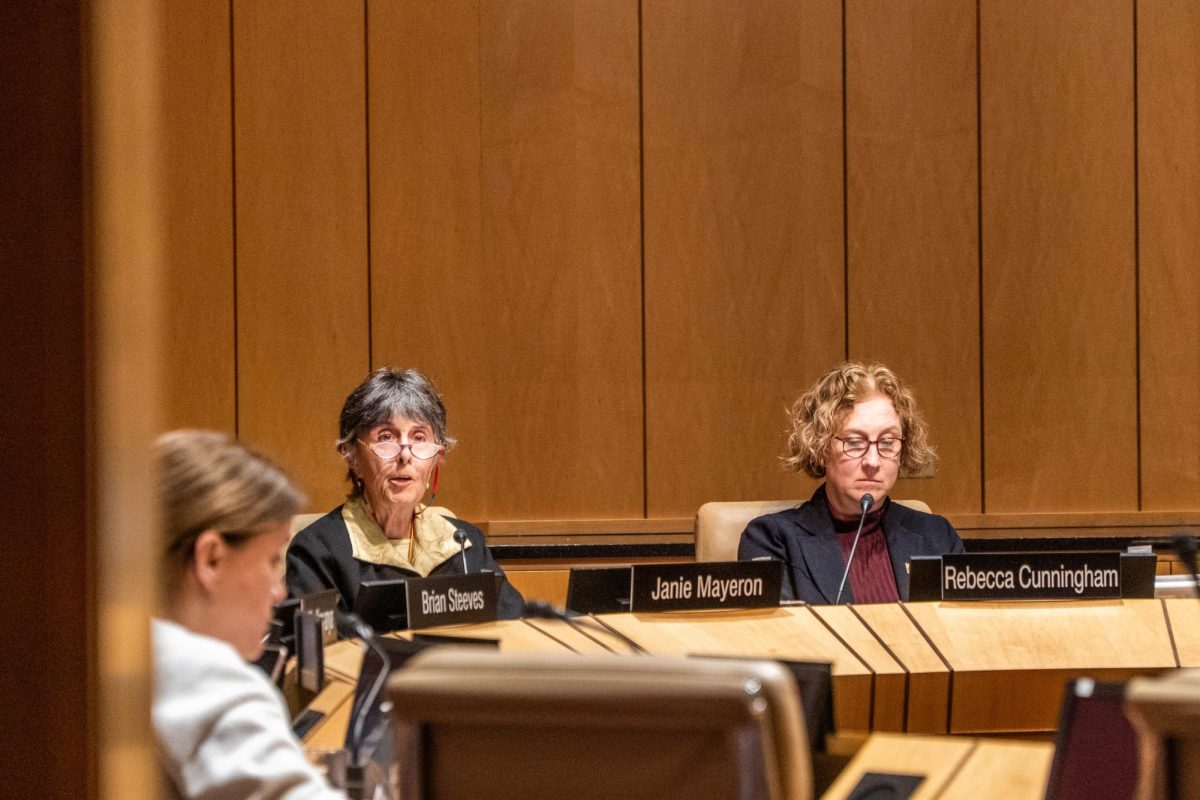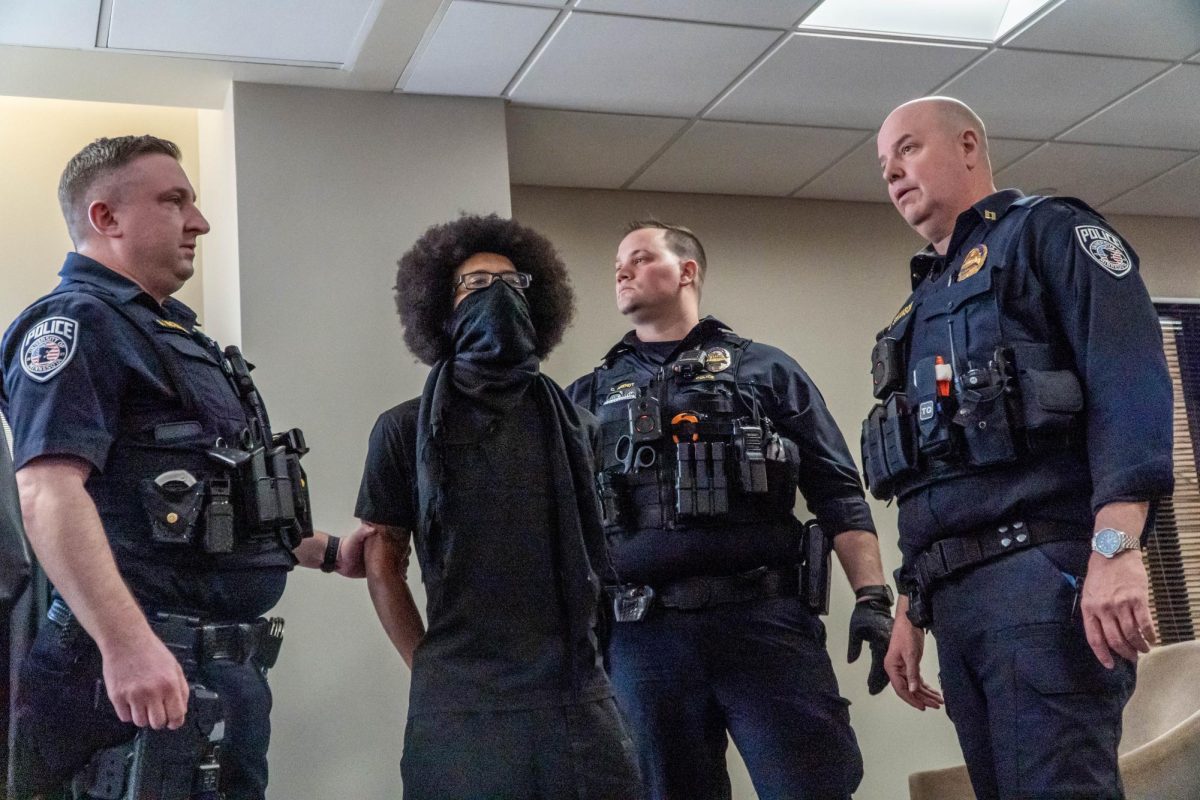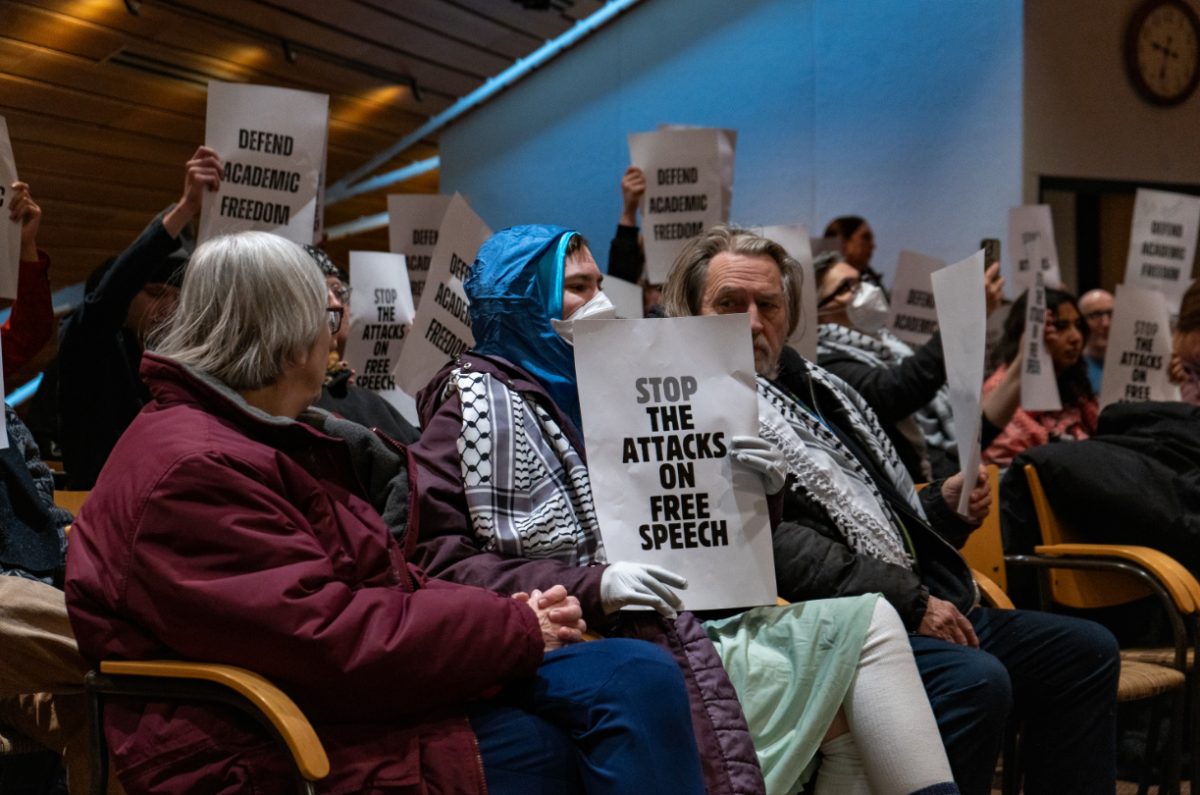The task force on the future of academic health at the University of Minnesota held their second meeting on Wednesday to discuss its recommendations to the governor.
The meeting featured presentations on the current state of Minnesota’s healthcare system, recommendations based on the 2015 Blue Ribbon Commission and the University’s five-point vision for academic health.
University Board of Regent member, Penny Wheeler, Dean Jakub Tolar of the Medical School and Dean Connie Delaney of the School of Nursing were named as members of the task force at the end of September. All three attended the meeting.
In her opening statement, former State Health Commissioner and task force chair Jan Malcolm said the current Minnesota health care system wasn’t designed for the challenges the state is facing today.
“This is the critical moment in time both to respond to some present challenges, but also it’s a great time to think bigger and envision the system we want for all Minnesotans,” Malcolm said.
Nearly one-third of rural physicians plan to leave the workforce within the next five years, according to the Minnesota Department of Health. Work satisfaction has dropped among nearly all healthcare professionals over the past four years.
“What we’ve been feeling in health care, we now are seeing,” Wheeler said. “The health care system in general is maxed out.”
According to Wheeler, the University has a massive impact in healthcare across the state. One of the bigger talking points of the meeting was improving healthcare delivery in rural areas.
Minnesota has a lot of unique assets and strengths, and recognizing them will help implement a stronger healthcare system, Wheeler said.
Douglas Peterson, a legal officer at the University, said recommendations to the task force are based on the University’s five-point plan for improving health care.
The five-point plan was introduced in January as a part of MPact 2025. The vision aims to help the University develop a world-class healthcare system where they are in control of University medical facilities while providing opportunities for partnerships with other healthcare systems.
Peterson said the five-point plan recommends a new state-of-the-art hospital to be built on East Bank campus. The current facilities on East and West banks are aging and a new hospital complex would help advance medicine for at least the next half-century, he said.
According to Peterson, partnerships like M Health Fairview and the proposed University-CentraCare program are essential to ensuring the University’s success in health care.
“The University cannot be an island,” Peterson said. “If we do this in isolation, we’re going to fail.”
The partnership between the University and CentraCare would place another regional University Medical School campus in St. Cloud by fall 2025.
Kenneth Holmen, CEO of CentraCare, said at the Board of Regents meeting Thursday that he was excited to enter into the partnership with the University and hopes their collaboration will help support rural health in Minnesota for the next few decades.
“If this gets approved holistically, we are serving a profound community effort across all of Minnesota,” Wheeler said in response to Holmen’s comments.
The University’s partnership with CentraCare is in its infancy, but there is still concern about the relations between the University and Fairview Health.
University representatives are meeting with Fairview leaders weekly to discuss the future of the partnership, Tolar said.
According to Wheeler, the task force can give recommendations, but Fairview and the University must reach a final decision between themselves.
The task force will hold its next meeting Oct. 25. Meetings will continue biweekly until Jan. 10, 2024, five days before the task force must submit its final recommendations.




















